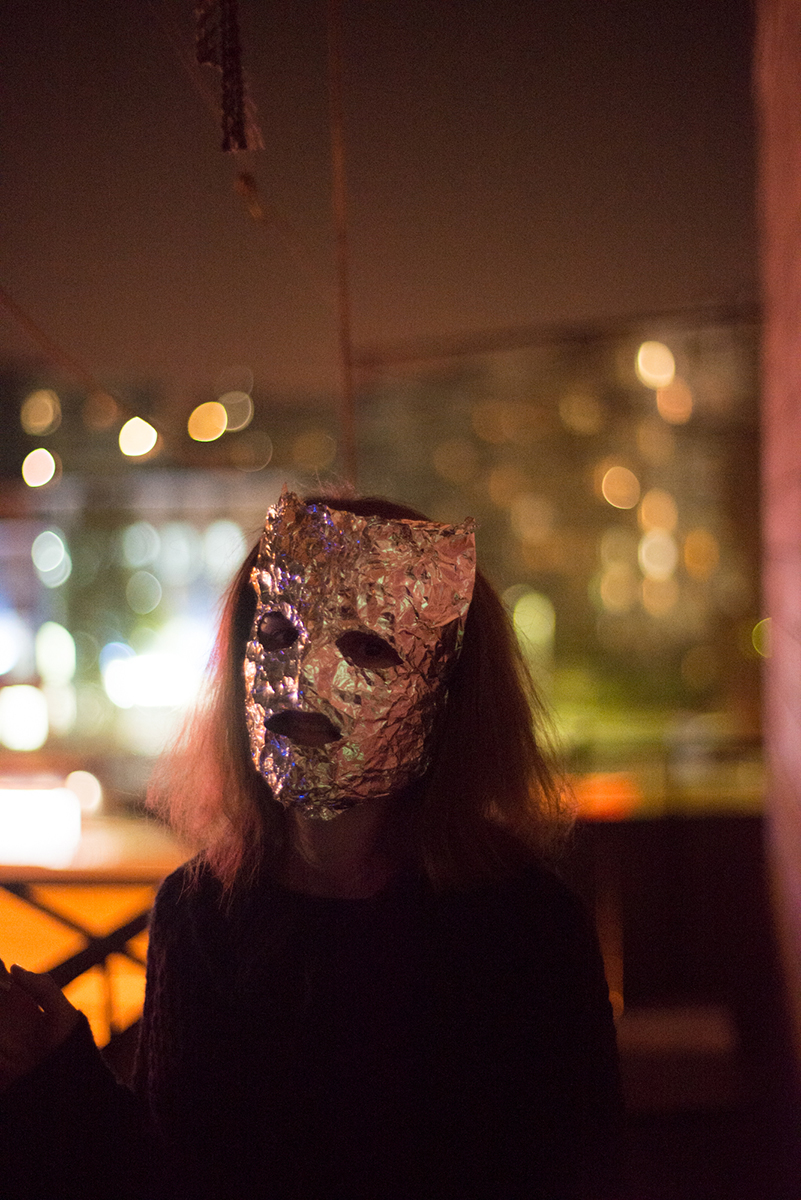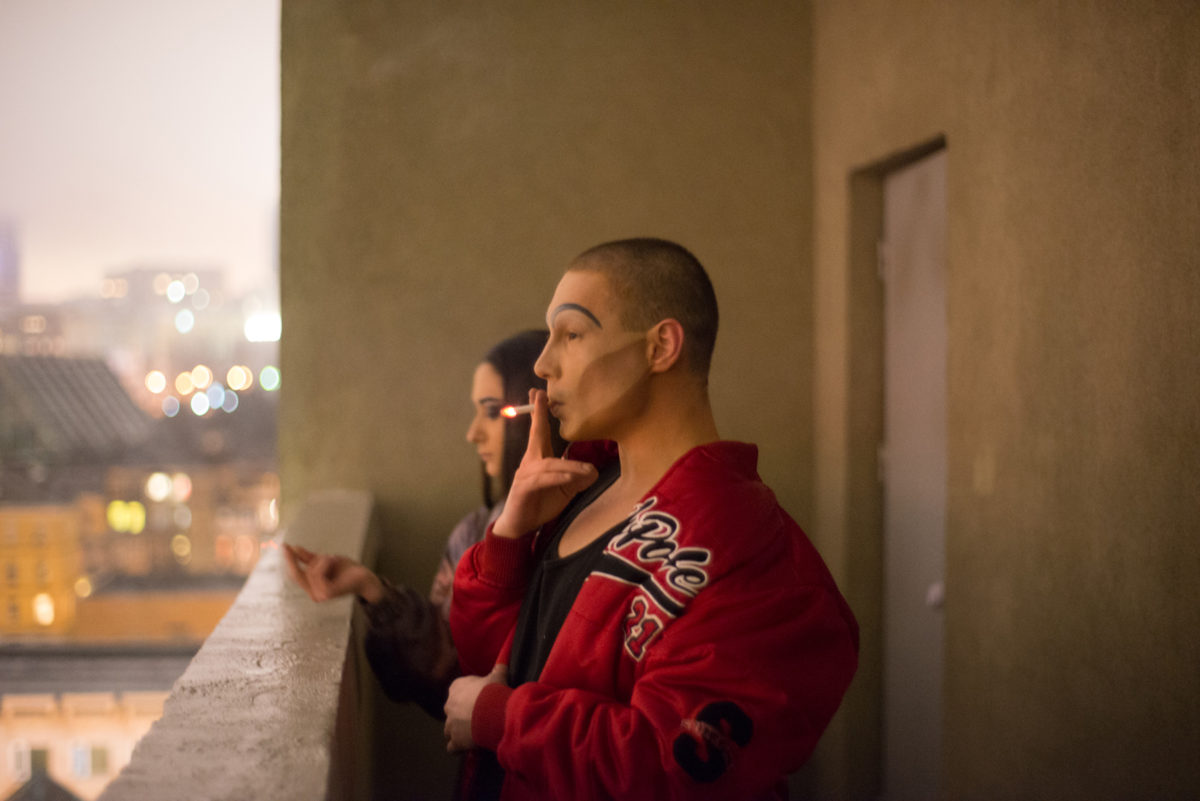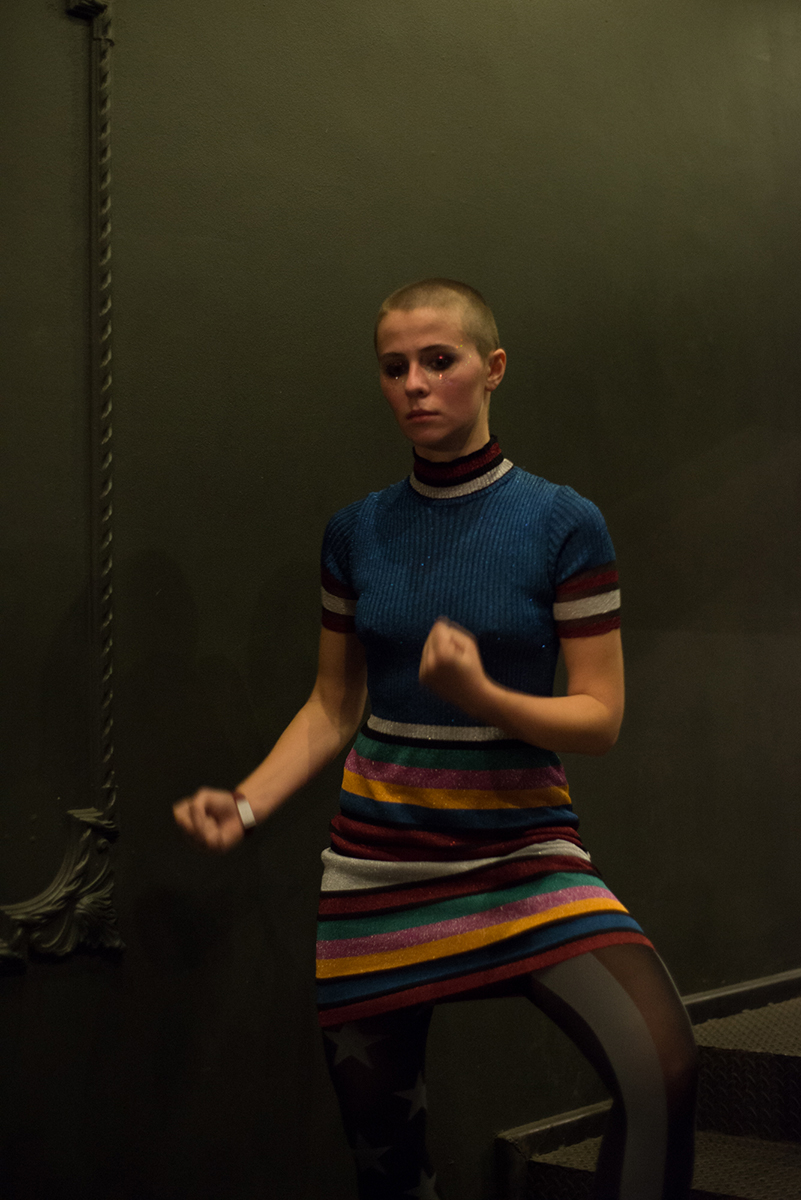Tobias Zielony’s Maskirovka, 2017
Text by Jörg Colberg
‘For me, rebellious refusal itself remains credible, even if the figure of the rebel has in the meantime become a neoliberal role model,’ said Tobias Zielony to German film director Christian Petzold in a conversation for the 2010 catalogue Story/No Story. ‘In times of self-flexibility and self-responsibility,’ he continued, ‘the radical individual who consciously leaves all social bonds behind is more the norm’. I’m tempted to think that this statement lies at the core of what drives the German photographer’s work. If rebellion can be seen almost as an empty gesture, then it’s not the rebellious act itself that merits attention, but rather the individual at its core. This focus on the individual is the connective thread that runs through Zielony’s work, linking his photographs of youths at German petrol stations, in Canadian carparks on American streets, or immersed in the Ukrainian queer and techno scenes.

More often than not, the subjects of his photographs are depicted in stasis. Not much ever seems to happen in their worlds. In his conversation with Petzold, Zielony quoted one of his subjects as saying ‘We’re not bored. Boredom is just a word for what we do anyway.’ This is exactly the type of state that, in German cultural critic Siegfried Kracauer’s words, avoids being ‘animated with the illusion of a life that belongs to no one and exhausts everyone’. In a world in which every act of rebellion is essentially little more than one small aspect of a vapid neoliberal lifestyle acceptance of the world as it is and being surrounded by like-minded people provide a much-needed respite.
Maskirovka, which was made in Kyiv between October 2016 and July 2017, comprises photographs, a video animated from single pictures, and interviews (the photographs and interviews form the catalogue, which was published in 2017 by Mousse Publishing). The photographs trace the photographer’s previously established lines of work , with sensitive portraits taken in ambient, often low or artificial light interspersed with anonymous cityscapes or fragments of brutalist architecture. The video provides sociopolitical context (a role fulfilled by the interviews in the catalogue): for a large chunk of the almost nine minutes, images from the series alternate with other visuals, which include what look like TV stills. Interestingly, at the beginning of the video, text is incorporated into these TV stills, with words such as “president” or “NATO” (in Cyrillic characters) flashing on the screen. A viewer could not discern Ukraine’s political situation – Crimea and eastern parts of the country are occupied by Russian forces overtly and covertly, respectively – from the photographs in the book in isolation, but in the video, there are myriad images of the military.


In the interviews that form part of Maskirovka, Zielony gives voice to some of his photographic subjects, young people named Tasia, Vicky, Maria, and Natasha. ‘Looking at the techno scene,’ he says to Tasia, ‘it is for me more real than the everyday post-Soviet world […] I’m trying to refer to the idea of maskirovka – a situation of military deception, undeclared wars, and uncertainty on all levels of life’. (Maybe what a viewer might interpret as boredom in the subjects is really an expression of such uncertainty.) Thus, the conversations naturally go back and forth between partying (‘What makes a good dancer?’) and the state of the nation (‘Why was Maidan so traumatic?’ [Maidan here specifically refers to the 2014 Ukrainian Revolution, very relevant parts of which played out in Kiev’s Independence Square, Maidan Nezalezhnosti in Ukrainian.]).
Lately, I have been bothered by the thought that Zielony’s work operates on the same level as Larry Clark’s – photographs of subcultures engaged in rebellious acts of adolescence and immaturity. But, as Maskirovka in particular demonstrates, that is not the case. Whatever politics one might want to read into Clark’s work, it pales in comparison with not only what Zielony’s unearths, but also how he unearths it. Zielony is too sensitive to underlying currents to make shallow work documenting an equally shallow culture: his subjects rise above circumstances, however bleak they might seem, to reaffirm their own being alive, their own desire to make the best of the world in which they find themselves.


There is only so much that photographs can communicate, which is probably one of the reasons why Zielony uses video and interviews in which more background information is revealed. But even in his portraits, Zielony manages to hint at the vast, as-yet untapped potential that life has to offer to those depicted therein. As Patrice Petro noted in Aftershocks of the New: Feminism and Film History (2002), ‘Hidden in the negativity of boredom and waiting, however, is the anticipation that something (different) might occur’. Or, to return to Kracauer, ‘If, however, one has the patience, the sort of patience specific to legitimate boredom, then one experiences a kind of bliss that is almost unearthly’. It is this kind of bliss that illuminates Zielony’s photographs.
For more from #2 Dance click here.
For more of Tobias’s work click here.




